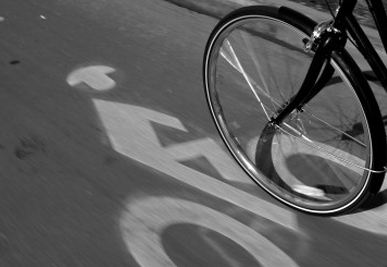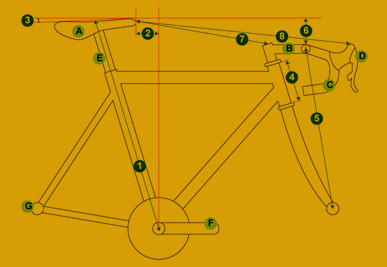Or try one of the following:
Bicycle X-Change
Wichita KansasRules of the Road 3 Nov 2012, 6:26 pm
Bikeman’s six Rules of the Road will prepare you for a safe and fun bike commute no matter where you are riding.
1. Follow the law.
Your safety and the image of bicyclists depend on you. You have the same rights and duties as drivers. Obey traffic signals and stop signs. Ride with traffic; use the rightmost lane headed in the direction you are going.
2. Be predictable.
Make your intentions clear to motorists and other road users. Ride in a straight line and don’t swerve between parked cars. Signal turns, and check behind you well before turning or changing lanes.
Bicycle Fit Tips from BXC 5 Oct 2012, 4:55 pm
Whether you are riding to the corner store or across the country, you should be comfortable on your bike. If you have neck, back, or knee pain, saddle sores, or hand or foot numbness, your bicycle probably doesn’t fit you properly. Good bike fit can also improve your pedaling efficiency and aerodynamics and actually make you faster. Here are the basic bike-fitting principles:
Adjusting the Saddle
Your bike seat should be level to support your full body weight and allow you to move around on the seat when necessary. Too much upward tilt can result in pressure points. Too much downward tilt can make you slide forward while riding and put extra pressure on your arms, hands and knees, which can lead to injury.
To adjust the seat height, wear your biking shoes and riding shorts and place your heels on the pedals. As you pedal backwards, your knees should fully extend in the down position. If your hips rock side to side the seat is too high. Now when you move your foot into the proper pedaling position, with the balls of your feet over the pedal, you’ll have a slight bend in your knees.
You can also adjust the seat forward and backward (fore and aft position). With your feet on the pedals so the crank arms are parallel with the ground, the proper position will put your forward knee directly over the pedal axle. Dropping a plumb line from the patellar tendon makes this adjustment a bit easier to see.
Handlebar Adjustment
If the handlebars are too high, too low, too close, or too far away, you may have neck, shoulder, back, and hand pain. A proper reach allows you to comfortably use all the positions on the handlebars and to comfortably bend your elbows while riding. There are other, more advanced adjustments you can make, such as changing the handlebar width or height.
Because your body is asymmetric (one leg or arm may be slightly longer or shorter than the other) an ideal bike fit is often a matter of trial and error. The slightest imbalance can lead to pain. Here are some common complaints and possible solutions.

